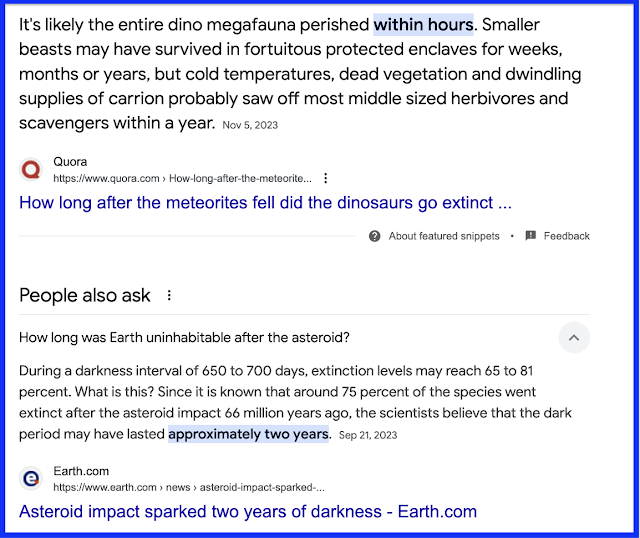The three books this week:
- When Life Nearly Died: The Greatest Mass Extinction of All Time, Michael J. Benton, c. 2003.
- Dinosaurs Rediscovered: The Scientific Revolution in Paleontology, Michael J. Benton, c. 2019.
- Gorgon: Paleontology, Obsession, and the Greatest Catastrophe in Earth's History, Peter D. Ward, c. 2004.
Some questions, areas to be explored:
- clade vs phylum
- the relationship between amphibians and reptiles, and between reptile and mammals at the juncture of the Permian - Triassic periods
- the length of time over which the entire dinosaur megafauna died: maybe within hours
- the Permian - Triassic extinction was fast, but not that fast -- maybe 100,000 years
- the cause of the P-T extinction -- the greatest extinction event ever
- the Triassic was "red"; the Jurassic was "yellow." Why?
- along the way, we'll learn about buckyballs (buckerminster fullerenes) and GSSPs.
A Global Boundary Stratotype Section and Point (GSSP), sometimes referred to as a golden spike, is an internationally agreed upon reference point on a stratigraphic section which defines the lower boundary of a stage on the geologic time scale.
The effort to define GSSPs is conducted by the International Commission on Stratigraphy, a part of the International Union of Geological Sciences.
Most, but not all, GSSPs are based on paleontological changes. Hence GSSPs are usually described in terms of transitions between different faunal stages, though far more faunal stages have been described than GSSPs.
The GSSP definition effort commenced in 1977. As of 2024, 79 of the 101 stages that need a GSSP have a ratified GSSP.

No comments:
Post a Comment